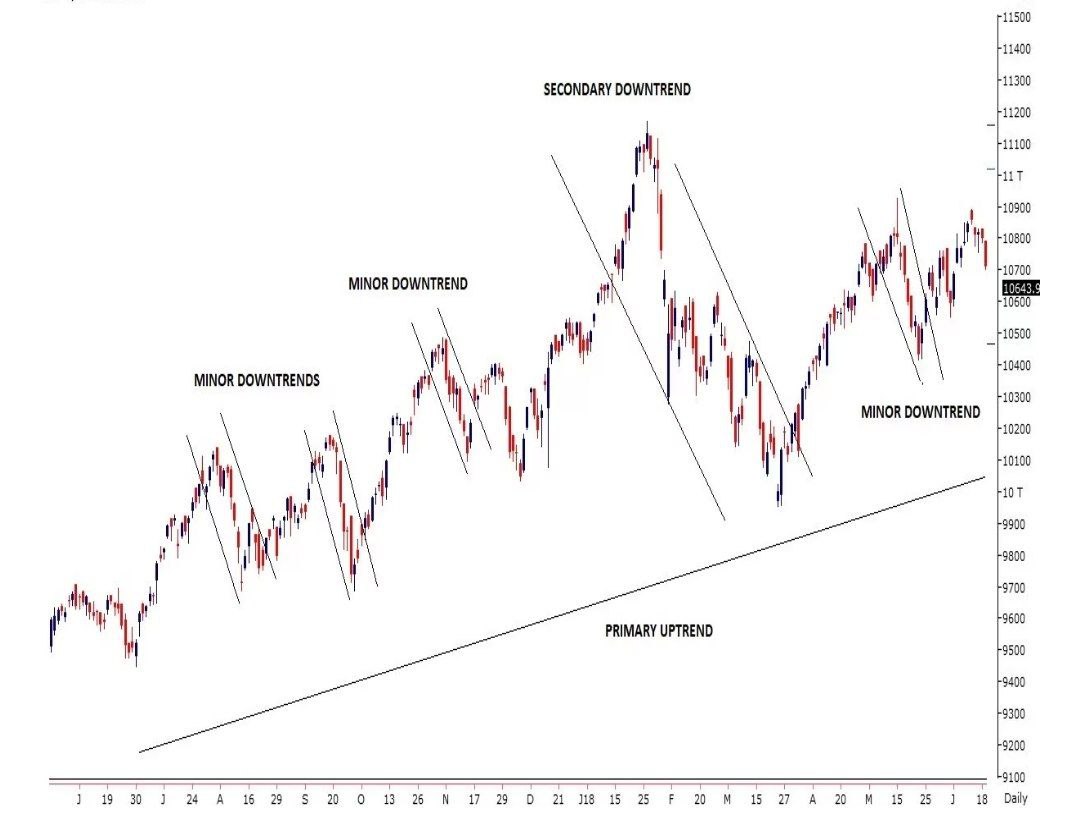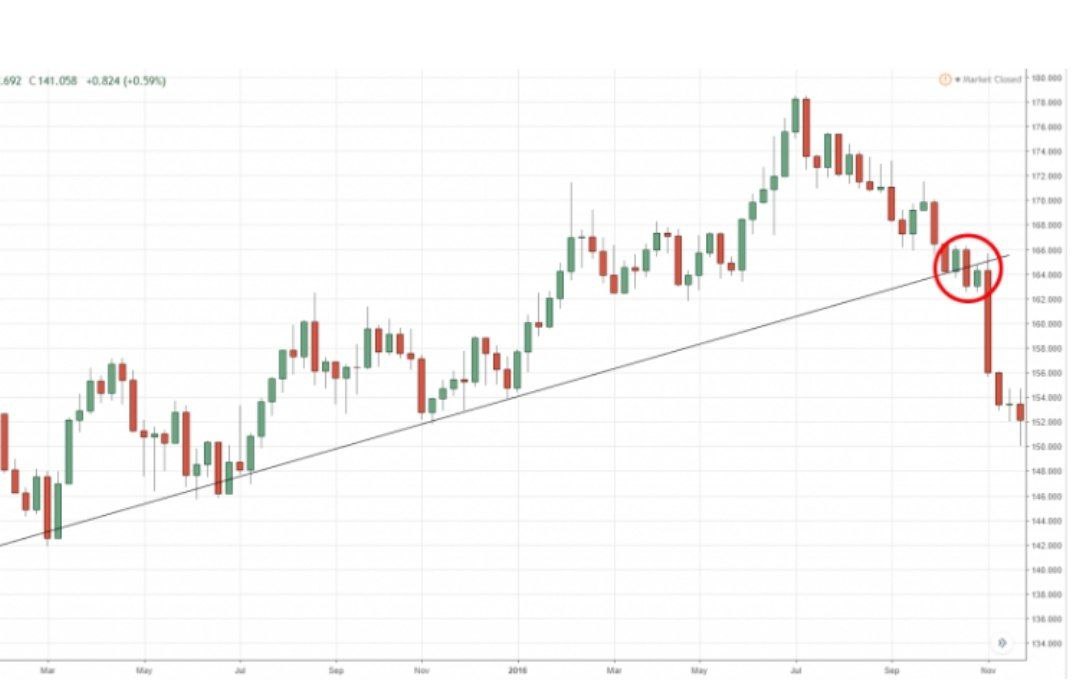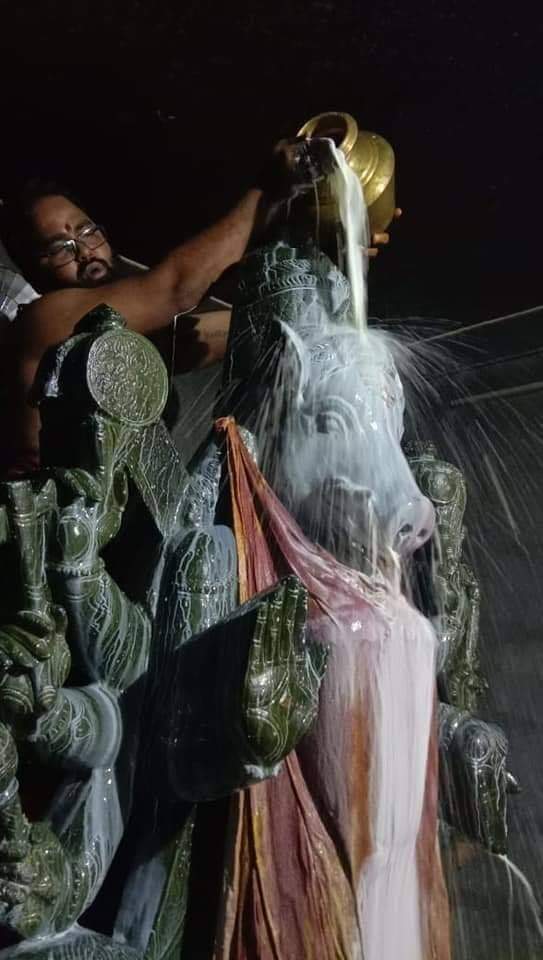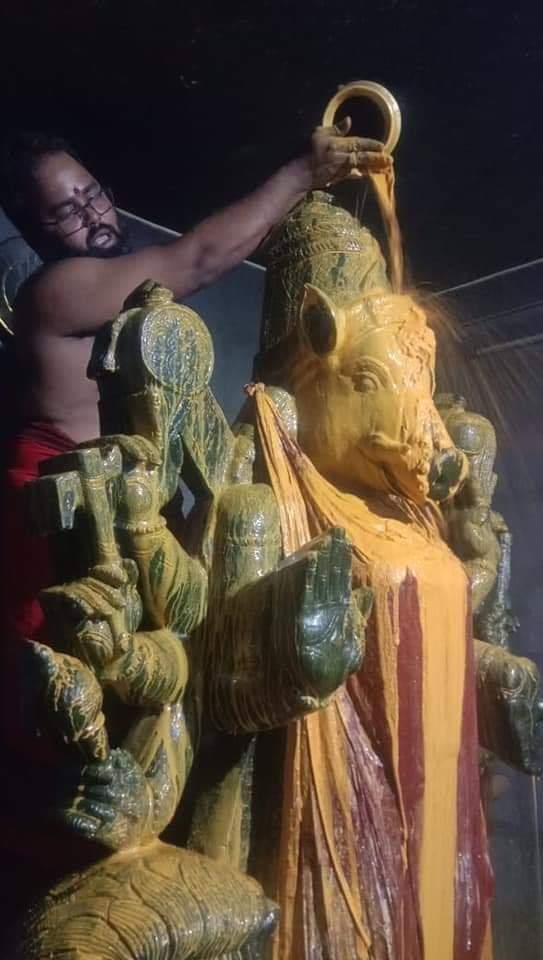The 6 tenets are listed below: 👇
Price Action trading is the ultimate form of trading. Dow Theory is of utmost importance when trading using Price Action.
Sharing these 6 Important Dow Theory lessons for free which is sold as a ₹40,000 course.
⬇️ A Thread 🧵
The 6 tenets are listed below: 👇
a) Primary trends
• Main movements in the market
• Time frame is large (1yr or greater)
b) Secondary trends
• These trends are corrections in the primary trend
• Direction opposite to the primary trend
• Timeframe is small (few weeks to few months)
• Smallest and most insignificant trends
• Smallest time frame ( few hours to few days)

This tenet is essentially made around the fact that the price of a stock incorporates all the information (any events, results, ratios, earning potential, etc.) about the stock.
Even future events are discounted as risk
Volume should increase if the price is moving in the direction of the primary trend and decrease if it is moving against it.
• Primary trend - Volume increases
• Secondary trend - volume decreases

This tenet suggests trend is considered to be concrete when all indices move in unison.
I.e indices move in the same direction
For example, trend cannot be classified as bullish if nifty midcap is moving up while other indices are going down
a) Accumulation Phase
• Occurs after a downtrend
• Institutions start buying to accumulate stocks at low prices
• Giving the stock an upward nudge
• Retail traders enter after seeing the stock getting stronger
• Price usually skyrockets during this phase
• Taking the stock to new highs
• Institutions start selling at highs
• While the retail traders are heavily invested
• The sell-off eventually reverses the trend

This tenet states that the primary trend remains in effect until a clear reversal occurs
This could be accompanied with
• Low volume in the trend's direction
• High volume in secondary and minor trends
• Breaking of an imp level
• Breaking of a trendline, etc

Dow theory is based on closing prices and is not concerned about the intraday movements.
For a trend signal to be formed, the closing price has to signal the trend, not an intraday price movement.
If you found this useful, please RT this tweet.
Also, for live trading and stock market related updates, you can join my Free Telegram Channel 👇
https://t.co/GHfoJevtw1
Follow me @mohitsharmadl for more.
Like/Retweet 👍 the first tweet below if you can: https://t.co/bO7HqSza0Q
Price Action trading is the ultimate form of trading. Dow Theory is of utmost importance when trading using Price Action.
— Mohit Sharma (@mohitsharmadl) November 25, 2022
Sharing these 6 Important Dow Theory lessons for free which is sold as a \u20b940,000 course.
\u2b07\ufe0f A Thread \U0001f9f5
More from All
You May Also Like
This is a pretty valiant attempt to defend the "Feminist Glaciology" article, which says conventional wisdom is wrong, and this is a solid piece of scholarship. I'll beg to differ, because I think Jeffery, here, is confusing scholarship with "saying things that seem right".
The article is, at heart, deeply weird, even essentialist. Here, for example, is the claim that proposing climate engineering is a "man" thing. Also a "man" thing: attempting to get distance from a topic, approaching it in a disinterested fashion.

Also a "man" thing—physical courage. (I guess, not quite: physical courage "co-constitutes" masculinist glaciology along with nationalism and colonialism.)

There's criticism of a New York Times article that talks about glaciology adventures, which makes a similar point.

At the heart of this chunk is the claim that glaciology excludes women because of a narrative of scientific objectivity and physical adventure. This is a strong claim! It's not enough to say, hey, sure, sounds good. Is it true?
Imagine for a moment the most obscurantist, jargon-filled, po-mo article the politically correct academy might produce. Pure SJW nonsense. Got it? Chances are you're imagining something like the infamous "Feminist Glaciology" article from a few years back.https://t.co/NRaWNREBvR pic.twitter.com/qtSFBYY80S
— Jeffrey Sachs (@JeffreyASachs) October 13, 2018
The article is, at heart, deeply weird, even essentialist. Here, for example, is the claim that proposing climate engineering is a "man" thing. Also a "man" thing: attempting to get distance from a topic, approaching it in a disinterested fashion.

Also a "man" thing—physical courage. (I guess, not quite: physical courage "co-constitutes" masculinist glaciology along with nationalism and colonialism.)

There's criticism of a New York Times article that talks about glaciology adventures, which makes a similar point.

At the heart of this chunk is the claim that glaciology excludes women because of a narrative of scientific objectivity and physical adventure. This is a strong claim! It's not enough to say, hey, sure, sounds good. Is it true?
MDZS is laden with buddhist references. As a South Asian person, and history buff, it is so interesting to see how Buddhism, which originated from India, migrated, flourished & changed in the context of China. Here's some research (🙏🏼 @starkjeon for CN insight + citations)
1. LWJ’s sword Bichen ‘is likely an abbreviation for the term 躲避红尘 (duǒ bì hóng chén), which can be translated as such: 躲避: shunning or hiding away from 红尘 (worldly affairs; which is a buddhist teaching.) (https://t.co/zF65W3roJe) (abbrev. TWX)
2. Sandu (三 毒), Jiang Cheng’s sword, refers to the three poisons (triviṣa) in Buddhism; desire (kāma-taṇhā), delusion (bhava-taṇhā) and hatred (vibhava-taṇhā).
These 3 poisons represent the roots of craving (tanha) and are the cause of Dukkha (suffering, pain) and thus result in rebirth.
Interesting that MXTX used this name for one of the characters who suffers, arguably, the worst of these three emotions.
3. The Qian kun purse “乾坤袋 (qián kūn dài) – can be called “Heaven and Earth” Pouch. In Buddhism, Maitreya (मैत्रेय) owns this to store items. It was believed that there was a mythical space inside the bag that could absorb the world.” (TWX)
1. LWJ’s sword Bichen ‘is likely an abbreviation for the term 躲避红尘 (duǒ bì hóng chén), which can be translated as such: 躲避: shunning or hiding away from 红尘 (worldly affairs; which is a buddhist teaching.) (https://t.co/zF65W3roJe) (abbrev. TWX)
2. Sandu (三 毒), Jiang Cheng’s sword, refers to the three poisons (triviṣa) in Buddhism; desire (kāma-taṇhā), delusion (bhava-taṇhā) and hatred (vibhava-taṇhā).
These 3 poisons represent the roots of craving (tanha) and are the cause of Dukkha (suffering, pain) and thus result in rebirth.
Interesting that MXTX used this name for one of the characters who suffers, arguably, the worst of these three emotions.
3. The Qian kun purse “乾坤袋 (qián kūn dài) – can be called “Heaven and Earth” Pouch. In Buddhism, Maitreya (मैत्रेय) owns this to store items. It was believed that there was a mythical space inside the bag that could absorb the world.” (TWX)






















